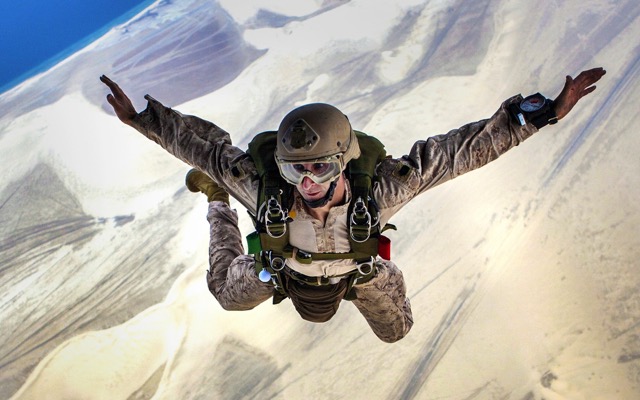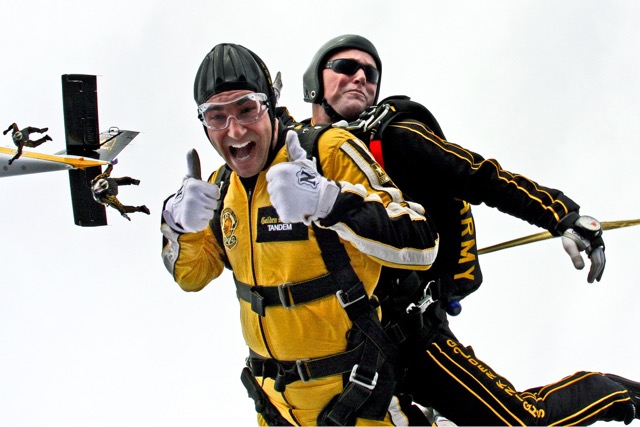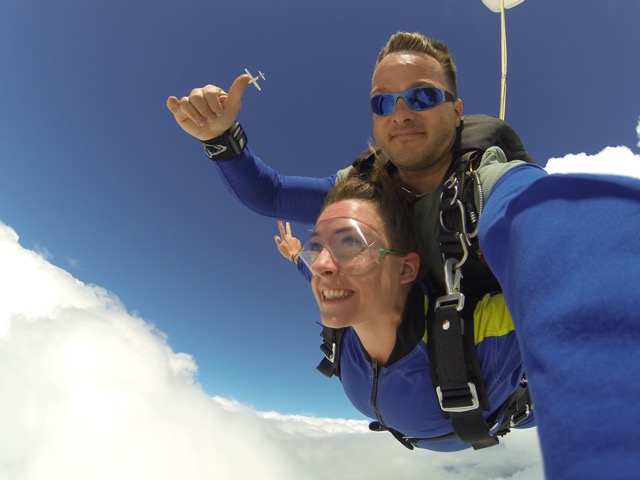When it comes to skydiving, there’s no room for shortcuts or complacency. We will delve into the potential consequences that can arise from making certain mistakes in the world of skydiving. From choosing the wrong dropzone to neglecting proper equipment inspection, skipping pre-flight training, and even ignoring weather conditions, each subheading represents a crucial aspect of skydiving that should never be underestimated. So, let’s explore the importance of avoiding these errors and prioritize safety above all else in the thrilling world of skydiving.
Choosing The Wrong Dropzone

Does the idea of jumping out of a perfectly good airplane excite you? Well, if you’re an adrenaline junkie like me, skydiving is definitely a must-try experience. However, before you take the leap of faith, there’s one crucial decision you need to make – choosing the right dropzone. Trust me, this can make or break your skydiving adventure. So, let’s dive in and explore the importance of selecting the perfect dropzone for your exhilarating skydiving experience.
First things first, let’s address the elephant in the room – what exactly is a dropzone? Well, a dropzone is essentially the location where skydivers take off and land. It’s like their basecamp for all the high-flying action. Now, you might be wondering, “What’s the big fuss about choosing the right dropzone?” Let me tell you, my friend, it’s all about safety and the overall experience.
Picture this – you’re all geared up, ready to conquer the skies, and you arrive at a dropzone that looks more like a deserted field than a professional skydiving center. The facilities are shabby, the staff is unprofessional, and worst of all, the safety protocols seem to be thrown out the window. Yikes! This is definitely a red flag, and you should reconsider your choice of dropzone.
| 1. Safety Comes First |
| 2. Facilities and Equipment |
| 3. Reputation and Reviews |
Now, let’s get down to the nitty-gritty of choosing the right dropzone. Safety should always be your number one concern when it comes to skydiving. Look for a dropzone that prioritizes safety above all else. Check if their equipment is well-maintained and up-to-date. It’s crucial to ensure that the dropzone follows all the necessary safety procedures and protocols. After all, you want to enjoy your skydiving adventure without any unnecessary risks, right?
Next, take a good look at the facilities and equipment provided by the dropzone. Are their parachutes in good condition? Do they have a well-maintained aircraft? These factors play a significant role in ensuring a smooth and enjoyable skydiving experience. Remember, you want to feel confident and secure when you’re about to make that big jump, so don’t settle for anything less.
Last but not least, do your homework and check the dropzone’s reputation and reviews. Thanks to the wonders of the internet, you can easily find feedback from previous customers. Read their experiences and see if the dropzone lives up to its claims. A reliable dropzone will have positive reviews and a strong reputation within the skydiving community.
Neglecting Proper Equipment Inspection

Have you ever heard the phrase “look before you leap”? Well, when it comes to skydiving, it’s more like “look before you leap, or you might fall flat on your face!” One of the most crucial aspects of skydiving that is often overlooked is proper equipment inspection. Trust me, you don’t want to skip this step. Imagine being thousands of feet in the air only to realize that your parachute isn’t functioning properly. Yikes!
When you arrive at the dropzone, it’s easy to get caught up in the excitement and adrenaline rush that comes with the sport. But before you even think about jumping out of a perfectly good airplane, take the time to thoroughly inspect your equipment. Start by checking the harness for any signs of wear or damage. Give the parachute itself a once-over to make sure there are no tears or holes. And don’t forget to double-check that your reserve parachute is securely packed and in good condition. Remember, your life literally depends on it!
It’s not just the parachute that needs your attention though. Take a look at your altimeter, which measures your altitude during the freefall. Make sure it’s calibrated correctly and functioning properly. And don’t forget to inspect your helmet, goggles, and jumpsuit. These may seem like minor details, but they can make a world of difference when it comes to your safety.
| Why Proper Equipment Inspection is Important: |
|---|
| 1. Safety: Need I say more? Proper equipment inspection ensures that everything is in working order and minimizes the risk of any malfunction happening during your jump. |
| 2. Peace of mind: By taking the time to inspect your equipment, you can have complete confidence in its reliability. This allows you to fully enjoy the thrill of skydiving without any nagging doubts in the back of your mind. |
| 3. Regulations: Skydiving is a highly regulated sport, and equipment inspection is a mandatory part of the process. Neglecting this step can not only jeopardize your safety but also lead to potential legal issues. |
So, the next time you find yourself at the dropzone, don’t rush into the sky without giving your equipment a proper inspection. It may not be the most glamorous part of skydiving, but it’s certainly one of the most important.
Skipping Pre-Flight Training

As an avid skydiver, I have had my fair share of heart-stopping moments in the air. The feeling of adrenaline coursing through my veins as I plunge from thousands of feet above the ground is unparalleled. But there’s one thing that I have learned over the years – pre-flight training is absolutely crucial.
Believe me when I say that skipping pre-flight training is like playing Russian roulette with your life. As thrilling as the sport may be, it’s essential to prioritize safety above all else. Pre-flight training ensures that you are familiar with all the necessary equipment, techniques, and emergency procedures. It prepares you for the worst-case scenarios that you hope will never happen but need to be ready for.
Picture this – you’re soaring through the sky, enjoying the breathtaking views, when suddenly, you encounter an equipment malfunction. Panic sets in, your heart starts racing, and you’re left grappling with a situation that you were ill-prepared for. This is precisely why pre-flight training is so vital. It equips you with the knowledge and skills to handle unexpected situations with composure and confidence.
- Understanding gear maintenance:
One of the key aspects of pre-flight training is learning how to properly inspect and maintain your gear. Every skydiver knows the significance of a well-functioning parachute system, harness, helmet, and other essential equipment. Skipping pre-flight training means neglecting these crucial maintenance steps, putting yourself at a higher risk of equipment failure mid-jump.
- Mastering emergency procedures:
In skydiving, accidents can happen, and emergencies can arise. Pre-flight training enables you to familiarize yourself with the necessary emergency procedures to handle these situations effectively. From knowing how to deploy your reserve parachute to managing a high-speed spin, pre-flight training ensures that you have the skills needed to react swiftly and safely.
| Important Weather Factors to Consider: | Possible Consequences: |
|---|---|
| Wind speed and direction | Unstable landing zones, difficulty in maintaining stable body position during freefall |
| Cloud cover | Poor visibility, increased risk of collision with other skydivers |
| Rain or thunderstorms | Unsafe jump conditions, risk of being struck by lightning |
So, before you even think about stepping foot on that plane, make sure you prioritize pre-flight training. Skipping it may save you a few hours, but the consequences can be grave. Remember, a skydiver who is well-trained is a skydiver who can enjoy the sport to its fullest, all while minimizing unnecessary risks.
Ignoring Weather Conditions

In the world of extreme sports, skydiving is undoubtedly one of the most exhilarating and adrenaline-pumping activities out there. The feeling of leaping out of an airplane and freefalling through the sky is an experience like no other. However, as with any adventure sport, proper precautions must be taken to ensure a safe and enjoyable experience. One of the biggest mistakes that novice and even experienced skydivers can make is ignoring weather conditions.
When it comes to skydiving, weather conditions play a vital role in determining the safety of a jump. Ignoring or underestimating the impact of weather can have disastrous consequences. You wouldn’t want to go skydiving during a thunderstorm, would you? The same logic applies to other weather conditions as well. Strong winds, heavy rain, or fog can all significantly impact the outcome of a jump.
So why is it so important to pay attention to weather conditions? Well, for starters, weather conditions can directly affect the stability of your parachute and the control you have during your descent. Imagine jumping out of a plane and being tossed around by strong gusts of wind. It wouldn’t be the most pleasant experience, right? Additionally, poor weather conditions can make it difficult for skydivers to accurately gauge their altitude and distance from the landing zone, increasing the risk of injury or landing in an undesired location.




